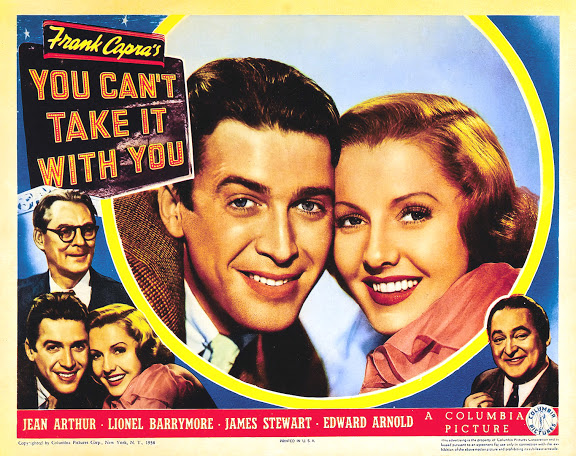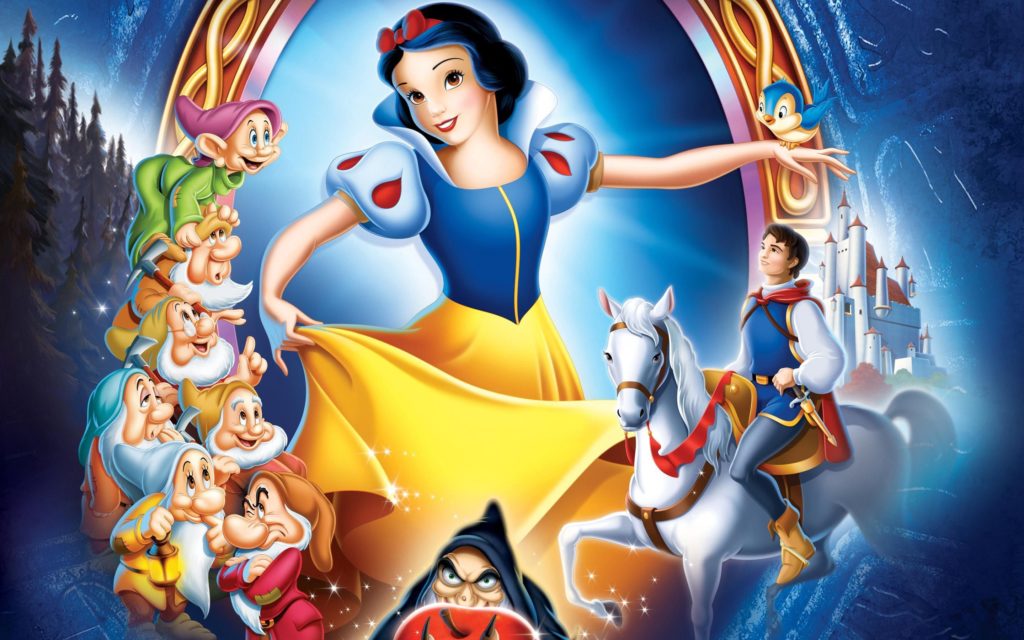1938
Home stretch, everyone! Frank Capra is here to warm some hearts, and the box office champ is here to one day rule all Metropolis
And The Oscar Goes To…
Frank Capra, master of schmaltzy feel-good movies, eight years out from It’s a Wonderful Life, brings us something of a prototype “No man is poor who has friends” story in this adaptation of a Pulitzer prize winning play. First of only two Best Pictures to be based on Pulitzer prize winning plays.
Jimmy Stewart plays Tony Kirby, son of a wealthy banker on the brink of a deal that will put him in charge of a weapons manufacturing monopoly (and level a neighbourhood). The only obstacle? Lionel Barrymore (his third appearance in this post) as Martin “Grandpa” Vanderhof, a kindly old man who runs a house full of artists and creators and dreamers, and his refusal to sell said house is blocking Kirby Sr’s deal. Also Tony is in love with Martin’s granddaughter Alice (Jean Arthur), but Mrs. Kirby doesn’t approve of her son marrying beneath her station, let alone Alice’s family of kooks, and can you guess where this goes? If you said “The Kirbys learn that money is no substitute for friends, love, and family,” treat yourself to some pie while I discuss some odd things about Lionel.
Lionel is the patriarch of this bunch, and everyone calls him “Grandpa,” but he seems younger than his daughter and son-in-law, and was only 22 years older than Jean Arthur. He also seems at least 20 years younger than his character in Saratoga, despite having such crippling arthritis that they had to rewrite his character to need crutches. But that’s fine, Lionel Barrymore can play anything. I know this because in It’s a Wonderful Life he plays Martin’s polar opposite, the fiendish Mr. Potter. You know, the rich guy who caused all of George Bailey’s problems by committing grand larceny and getting away with it. Sheesh. Welcome to America.
Also Alice’s sister is in love with ballet and is almost constantly dancing, frequently en pointe. The 15 year old actress playing her was not trained enough, and this physically hurt her so much she’d sneak off set to cry. Jimmy Stewart saw she was crying, but didn’t know why, so he kept buying her candy to make her feel better. That’s not film commentary, but I thought it was sweet so I’m telling you.
You Can’t Take It With You is predictable and is probably twenty minutes too long as a result, but it has some real charm to its performances and that made it a fun watch overall.
Anyway here’s my running account of history’s worst “Meet the in-laws” dinner ever.
And Rotten Tomatoes Says: An adjusted score of 102.347% puts it at #34, almost in the top third. Sure, why not.
What Would Yancey Cravat Do: Yancey’d have fit right in with the Vanderhof clan. And Kirby Sr’s weasely employee who sicced the FBI on Grandpa and company would have gotten a belt in the eye and a talking to.
The Box Office Champ
1928: Mickey Mouse arrives.
1938: Disney rules the box office for the first time. Not the last. The Empire of Joy has begun.
Friends and fans, an awed hush for Snow White and the Seven Dwarves.
But seriously folks.
Snow White and the Seven Dwarves does remain an iconic piece of Disney history, because it exists as both a concise prototype of the Disney brand and also a slightly awkward transition from shorts to feature films.
All the Disney trademarks are here: a princess who speaks to the animals and makes her first appearance singing a wishing song about what her life is missing, while looking into water. All the Disney Princess Trademarks that even Disney has started making fun of. Plus a big, sinister villain, wacky antics from side characters, and a noble, charming prince, even if his only character traits are showing up during her song about wanting to find her true love to say “Hey, I’m down to party” then kissing her while she’s apparently dead.
On the flip side, it’s also obviously Disney’s first feature, because at just over 70 minutes they’re still struggling to find enough story to fill it. They pad it out with songs and prolonged comedy bits. By way of a for instance, a musical number about the seven dwarves learning to wash up for dinner takes up about as much screen time as the Evil Queen feeding Snow White the poison apple. Possibly including the dwarves chasing her to her death. (The Queen, not Snow White, other than Grumpy the dwarves accepted this “washing up” business without a fight.)
It’s also our first colour film in this series, but was it easier to make cartoons full colour? Might have been, I’m not sure.
There’s possibly a think piece in “The Queen is so jealous of Snow challenging her beauty that she loses said beauty to bring Snow down” but honestly it’s gonna get bitchy so let’s move on.
And Rotten Tomatoes Says: 98%, you’re not gonna find a lot of complaints about this one outside of internet pedants looking to mine nitpicks for views. What? I meant Cinema Sins and their ilk, not me.
What Would Yancey Cravat Do: Picture Snow White and the Huntsman but it only lasts 20 minutes before the Queen is deposed. What’s that? You haven’t seen Snow White and the Huntsman? Yeah me neither, but I’m making some assumptions.
Other Events in Film
Cameras rolled on The Wizard of Oz, and between burns, allergic reactions, and the horrific mistreatment of Judy Garland it was a bloodbath.
Next Page: An Absolute Unit



One thought on “Art Vs Commerce: Beginnings (20s/30s)”